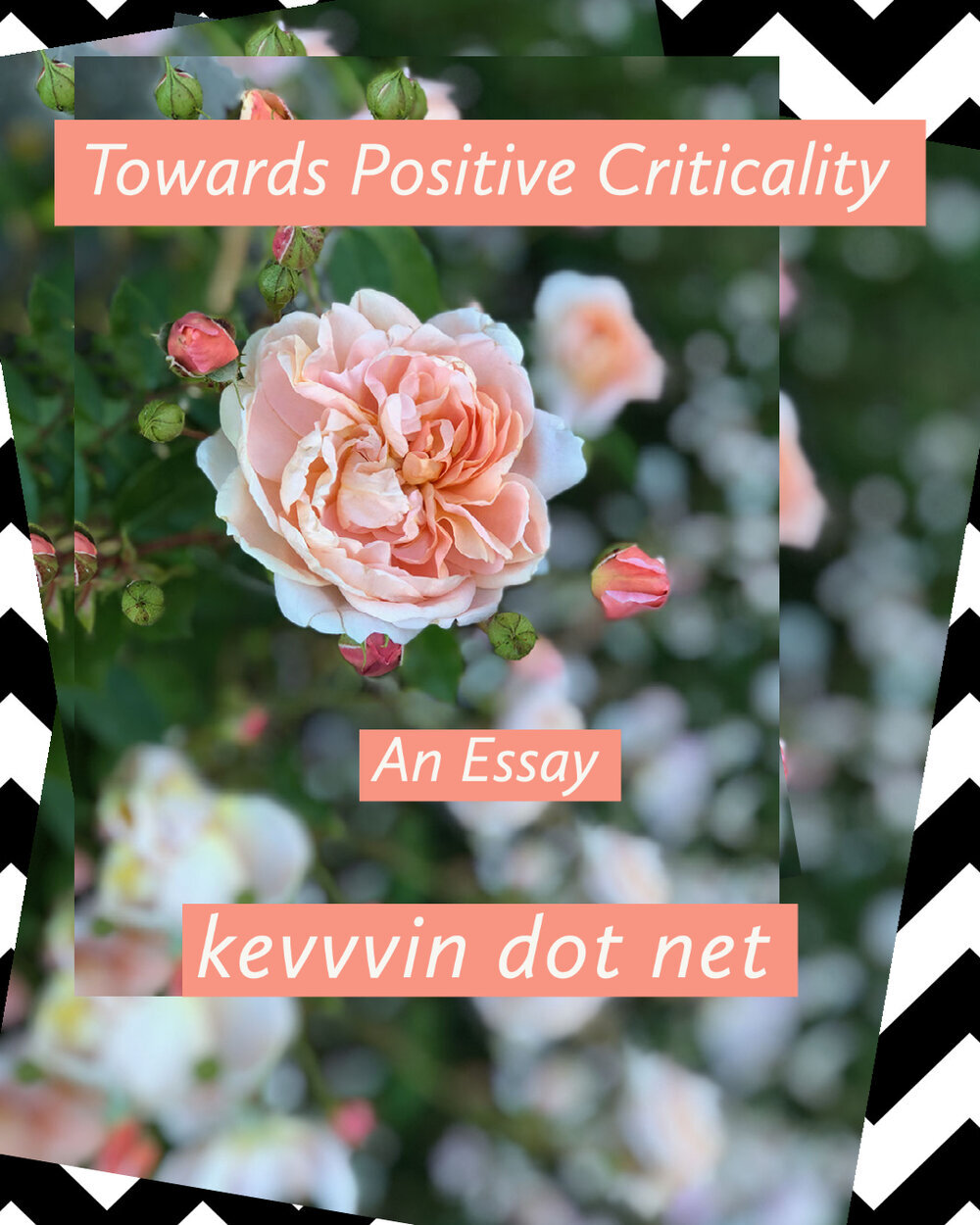Towards Positive Criticality: An Essay
April 23, 2021
“THE UTILITY OF BEAUTY AS A LEGITIMATE RECOURSE RESIDES IN ITS ABILITY TO LOCATE US AS PHYSICAL CREATURES IN A LIVE, ETHICAL RELATIONSHIP WITH OTHER HUMAN BEINGS IN THE PHYSICAL WORLD.”
-DAVE HICKEY, THE INVISIBLE DRAGON: FOUR ESSAYS ON BEAUTY
As long as I’ve been on this planet art has suffered from a so-called “crisis of criticism.” What I have come to recognize is that this crisis is simply a problem of gatekeeping for the Western Artistic Canon. Aesthetic relativity and stylistic plurality have proven less apocalyptic than once predicted.
The word criticism comes from the Greek ‘crit’- to separate, cut apart, or offer judgement. It is a fundamentally deconstructive and sometimes destructive process. Naming a problem does not fix it. In fact, turning attention to a problem often makes it worse. For example, D*n*ld Tr*mp. It is why digital natives understand not to feed the trolls.
So then, what about all the bad art being made? Who’s going to tell the public how bad it is? Well, if it were up to me, we’d just ignore it. If it’s not for you, it’s not for you. After all, there is no “bad art” so much as there is simply art you do not happen to like.
It takes courage to proclaim beauty.
At the heart of a shift away from criticism-for-criticism’s sake is a renewed emphasis on the Essay. The word itself comes from the French word ‘essayer,’ “to try.” An essay attempts something. It allows for play, experimentation, and most importantly, failure. It is fundamentally constructive.
Positive Criticality situates art within a context and helps give voice to the artist’s vision. It strives to shine a light on solutions, not problems. It incorporates myriad voices and does not rely solely on one’s own subjective taste. It interpolates disparate sources in new and imaginative ways.
If the modus operandi of critical theory up to this point has been a stubborn reliance on negativity, nihilism, and cynicism as tools to signal intellectual superiority, then let this new paradigm be defined by a full throated revival of Romanticism. An unabashed embrace of everything lush, beautiful, sensual, and soul-moving. It is not naive to allow for joy. Nay, it remains the only sensible response to this world’s ceaseless horrors.

